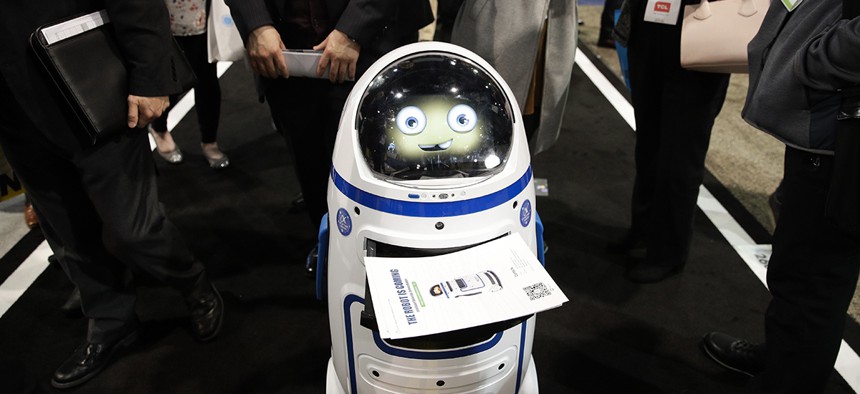The Robots of 2018 Are iPads on Wheels

Evolver's Fabo E01 service robot carries flyers at CES International, Wednesday, Jan. 10, 2018, in Las Vegas. Jae C. Hong/AP
Information robots took over the robot section of CES 2018.
If we can believe anything we saw at CES, it’s going to be a great year for getting directions in shopping malls.
Information robots took over the robot section of the show floor this year, signaling that the technology to scoot around and act as guides will become as commonplace as the droids in Star Wars that scurry about the ankles of humans, performing simple tasks. More realistically, there’s no discernable difference between these robots and an iPad on a stand in the middle of a store lobby.

The typical customer service robot is a white plastic tower that stands four-and-a-half feet tall with a touchscreen where a humanoid head would be. Some, like UBTech’s Cruzr, have arms that only gesture. A representative from the company told Quartz that making the hands capable of holding anything would make the robot too costly. That makes robots slightly less useful than those statues of mustachioed chefs that present menus to potential customers of family-oriented Italian restaurants.

When a person walks up to a information robot, vendors say that the robot should stop any motion, recognizing that a person is trying to interact with it. Few have voice interfaces, like an Alexa or a Siri, with most relying on their touchscreen-faces for people to navigate to directions or information on a product in the store.
“Believe me, it’s an attention-getter,” said David Fracis Martinez of Qihan, a Chinese company that makes the Sanbot robot, to a group of CES-goers asking the advantages of the robot. “Once you have them that’s all that matters.”



